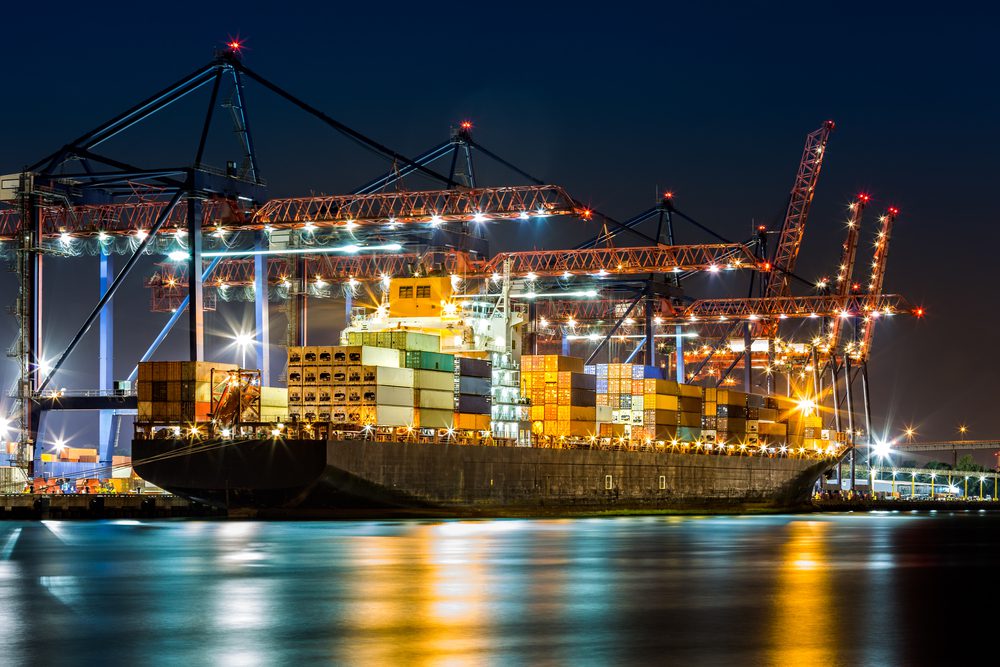UK Strikes at Heart of Russia’s Arctic Energy Empire
New maritime services ban threatens to sever lifeline for Yamal LNG exports By Paul Morgan (gCaptain) – In the frozen waters above the Arctic Circle, a fleet of specialised ships...

By Mike Wackett,
Ocean carriers cancelled some 230 sailings in 2015 between Asia and North Europe to boost vessel utilisation levels, and, according to Drewry, they will need to be even more radical this year with their capacity management strategy if rates on the tradelane are to return to profitable levels.
Drewry data shows that blanked westbound sailings last year cut approximately 8%, or 910,000 teu, of capacity from the sea freight route.
The consultancy notes that the O3 and G6 alliances were “the biggest practitioners of void sailings in the Asia-North Europe trade last year”, removing 290,000 and 270,000 teu respectively.
he other two alliances, the 2M and CKYHE, were “more restrained”, culling 160,000 and 190,000 teu respectively over the year.
This removal of capacity on the headhaul route enabled carriers to average a respectable 87% load factor for their ships over the year which, although down from the healthy 93% achieved in 2014, did not “fully explain the rates blood-bath that ensued”, said Drewry.
In fact, the consultancy was almost complementary in regard to the capacity management of carriers.
It said that considering the seasonal peaks in volumes, “carriers did a reasonable job last year of matching supply with demand on a monthly basis”, keeping within a narrow 10 percentage point spread for vessel utilisation of a low of 83% in February and November and a high of 93% in August.
Despite posting a net loss of $181m for 2015, NOL said its APL container line had achieved a headhaul utilisation rate of 90% across its trading regions, by self-proclaimed “prudent management of its deployed capacity”.
However, the current levels of capacity management do not seem to be sufficient to prevent container spot rates from plunging to historically low levels on a number of tradelanes.
Spot freight rates from Asia to North Europe fell another 23% last week, to $257 per teu, obliging carriers to defer 1 March general rate increases until the middle of the month, and prompting the G6 alliance to axe another 11 westbound sailings.
Moreover, spot rates have taken on greater importance this year, as both carriers and shippers have shown a reluctance to enter into contract deals, making spot market the largest source of cargo supply for many carriers.
The effectiveness of blanked sailings varied in different months of 2015, said Drewry, noting that in the most successful period of August, the significant improvement in vessel load factors had helped sustain a big spike in freight rates achieved in July.
Drewry also noted that, with only minimal demand growth anticipated this year, carriers will need to be even more creative at hiding the 1.3m teu of newbuilds stemmed for delivery – most of which consist of ultra-large tonnage destined to be deployed on east-west trades.
“Carriers will need to intensify the cascade of ships, missed sailings and lay-ups in order to raise utilisation to levels that could propel rates to profitable levels,” said Drewry.
The Loadstar is fast becoming known at the highest levels of logistics and supply chain management as one of the best sources of influential analysis and commentary.
Check them out at TheLoadstar.co.uk, or find them on Facebook and Twitter.

Sign up for gCaptain’s newsletter and never miss an update

Subscribe to gCaptain Daily and stay informed with the latest global maritime and offshore news
Essential news coupled with the finest maritime content sourced from across the globe.
Sign Up